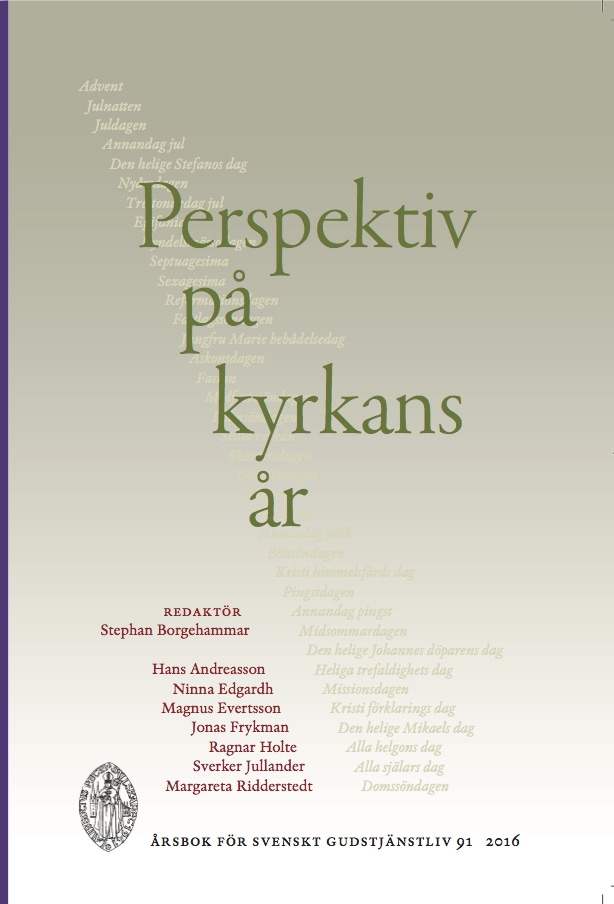Kyrkoåret i tidegärden – berikat av gammal sångskatt
Abstract
The Liturgical Year in the Divine Office– Enriched by Gregorian Melodies
During the sixteenth century, the national Church in Sweden broke its obedience to the Pope and accepted a Lutheran confession. In the liturgy, however, many traditional elements were still appreciated, not only in the Eucharist but also in the Divine Office, where songs mainly taken from the Book of Psalms were given melodies in the modi of Gregorian chant. New editions of such material were still being published in the late seventeenth century but came subsequently out of use. However, at the beginning of the twentieth century two Swedish clergymen, Arthur Adell and Knut Peters, published new editions of the Office, entitled Den svenska tidegärden. They were especially engaged in trying to supply Psalm texts in the Swedish language with authentic Gregorian melodies.
After the Second Vatican Council (1962–1965), through which the use of the national languages in the liturgy became more accepted than before, the Catholic Church in Sweden initiated an ecumenical edition of the Divine Office, which was published in 1995 as Tidegärden, kyrkans dagliga bön with recommendations from four church leaders, both Catholic and Evangelical. Since then, the use of the Office has become much more widespread, and many different editions have seen the light. Most of the editions concentrate on the text without proposing any melodies, and common recitation of the Psalms is certainly much more often practised than the singing of them. Several different solutions to the melodic problem have been presented, but for a more or less complete solution there exist mainly two alternatives today. The one on the Catholic side has been presented by Anders Ekenberg, with the first publication ever of the Liturgy of the Hours in Swedish in 1993 (Kyrkans dagliga bön), in which a much simplified form of Gregorian chant is used. The one on the Lutheran side, initiated about 100 years ago by the above-mentioned two clergymen, has after them been followed up by me, Ragnar Holte, and the Laurentius Petri Association (named after the first Lutheran archbishop of Sweden, an ardent admirer of the Office and of Gregorian chant). Our material covering the complete ecclesiastical year is today available in digitized form at http://antifonalet.gudstjänst.nu.
In order to underline the ecumenical character of the project, the organizing committee of Tidegärden 1995 had asked me to deliver material for all the complines. So I did – all of them with classical Gregorian melodies. Several of my texts are included in the main volume, which contains no melodies at all. A separate volume contains Ekenberg’s simplified melodies but none of the classical Gregorian melodies that I had delivered. In my illustrative material here I have given for comparison our highly different versions of the Nunc dimittis antiphon for Easter and Pentecost, Ekenberg’s version being his own fabrication, mine an exultant classical melody.
Downloads
Published
Issue
Section
License
© the authors, Laurentius Petri Sällskapet för Svenskt Gudstjänstliv and Artos & Norma Bokförlag. Copying and using material from Svenskt Gudstjänstliv for scholarly purposes is permitted as long as the source is indicated. For other uses, please contact the respective author as well as the publisher. Special restrictions may apply to images.


